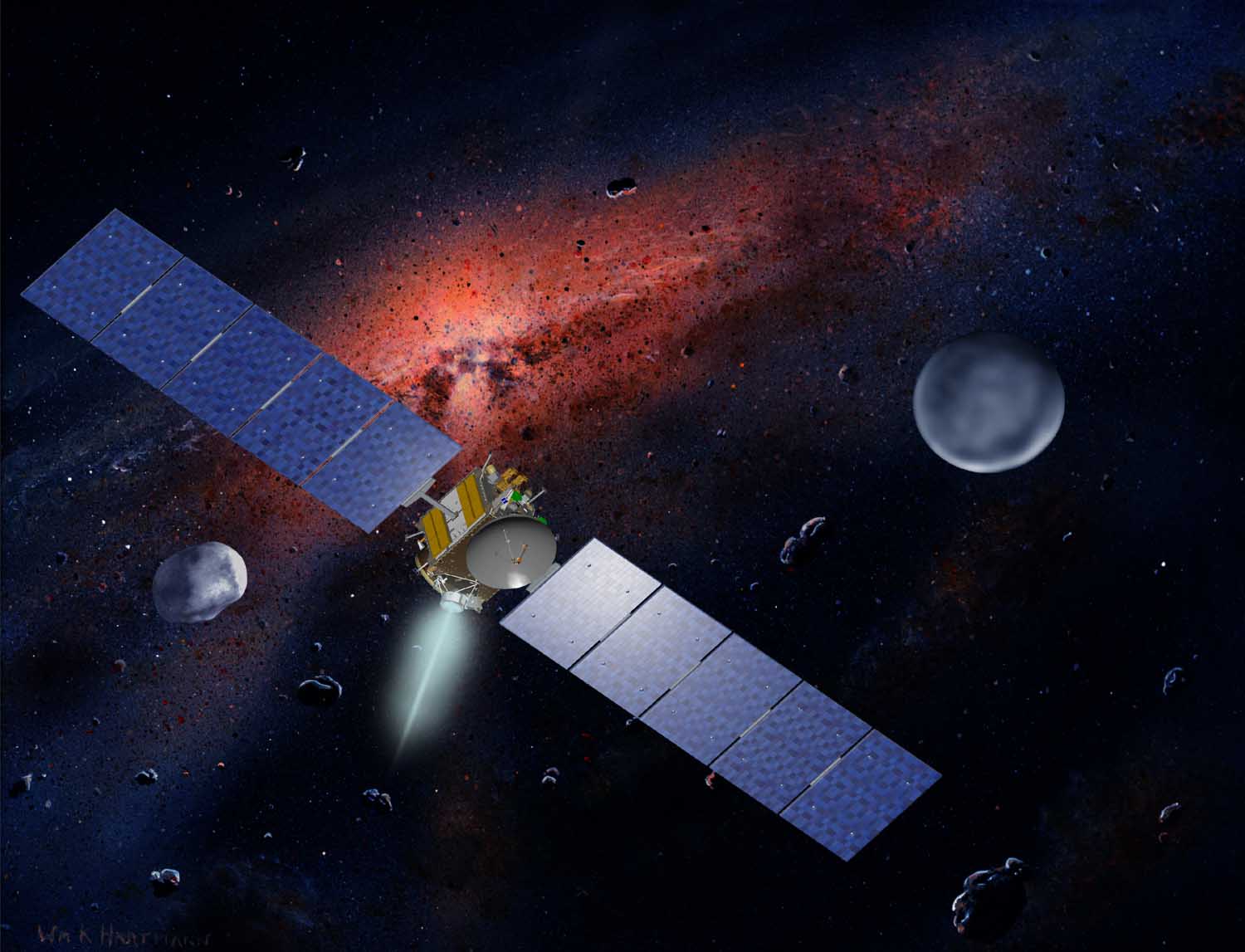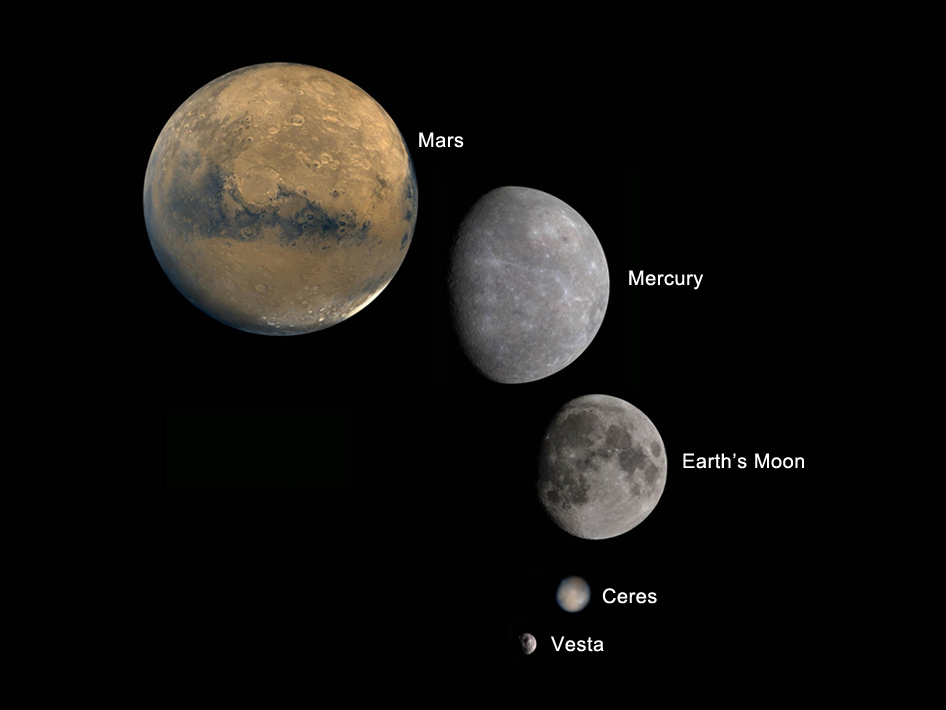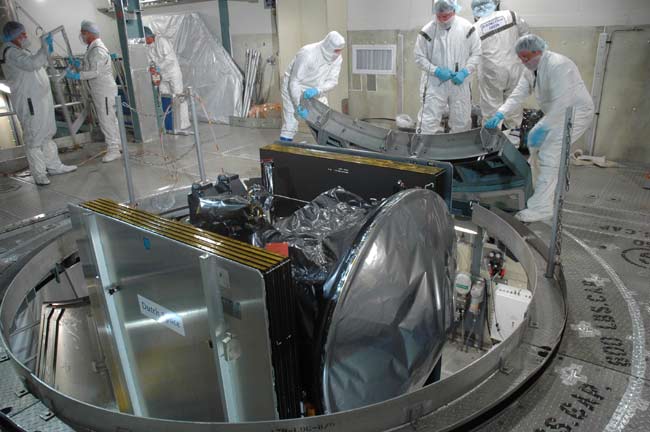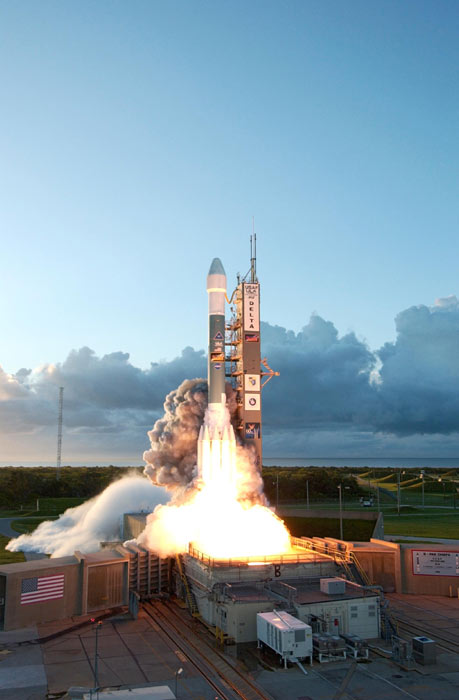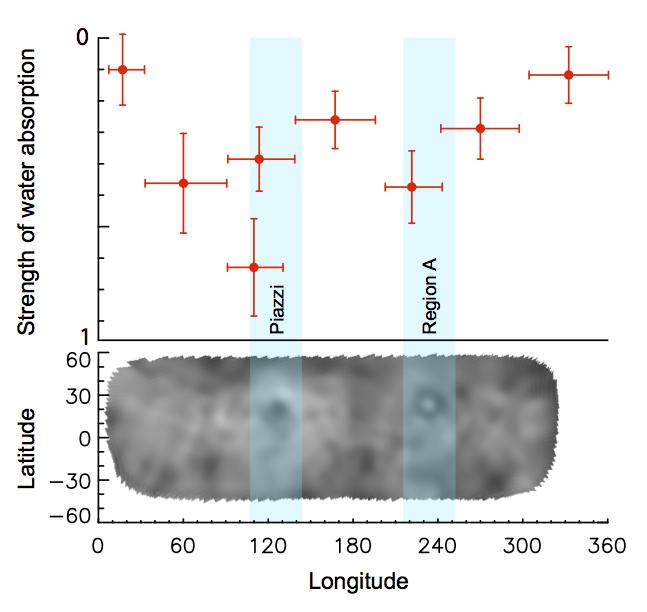Photos: Dwarf Planet Ceres, the Solar System's Largest Asteroid
Vesta and Ceres Hubble View
Hubble Space Telescope imaged the asteroid Vesta and the dwarf planet Ceres in 2007, both targets of NASA's Dawn mission.
Artist's Concept of NASA's Dawn Spacecraft
An artist's concept of NASA's Dawn spacecraft. The asteroid Vesta, which the craft has already left, is on the left. Dawn will reach Ceres, shown on the right, in March 2015.
Asteroid Vesta in Perspective with Ceres
The giant asteroid Vesta is shown here as the smallest body among other similar bodies in the solar system: Mars, Mercury, Earth's moon and the dwarf planet Ceres.
Workers Preparing Dawn Spacecraft for Launch
Launch pad workers prepare the Dawn spacecraft for its attachment to a Delta 2 rocket. The probe is set to launch in September 2007 to visit the asteroids Vesta and Ceres.
Dawn Spacecraft Launches on Mission to Asteroids Vesta and Ceres
NASA's Dawn asteroid probe launches on a three billion mile (4.9 billion-kilometer) mission to the asteroids Vesta and Ceres atop a Delta 2 rocket on Sept. 27, 2007 at Cape Canaveral Air Force Station in Cape Canaveral, Fla.
Water Detection on Ceres
This graph shows variability in the intensity of the water absorption signal detected at Ceres by the Herschel space observatory on March 6, 2013. The most intense readings correspond to two dark regions on the surface known as Piazzi and Region A, identified in the ground-based image of Ceres by the W.M. Keck Observatory on Mauna Kea, Hawaii. The two data points at 110 degrees longitude were taken in a time interval of about 9 hours — equal to the Ceres rotation period — showing that variability in the water vapor production is possible even over short periods.
Breaking space news, the latest updates on rocket launches, skywatching events and more!

Space.com is the premier source of space exploration, innovation and astronomy news, chronicling (and celebrating) humanity's ongoing expansion across the final frontier. Originally founded in 1999, Space.com is, and always has been, the passion of writers and editors who are space fans and also trained journalists. Our current news team consists of Editor-in-Chief Tariq Malik; Editor Hanneke Weitering, Senior Space Writer Mike Wall; Senior Writer Meghan Bartels; Senior Writer Chelsea Gohd, Senior Writer Tereza Pultarova and Staff Writer Alexander Cox, focusing on e-commerce. Senior Producer Steve Spaleta oversees our space videos, with Diana Whitcroft as our Social Media Editor.

